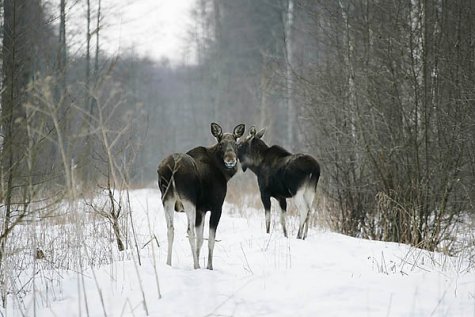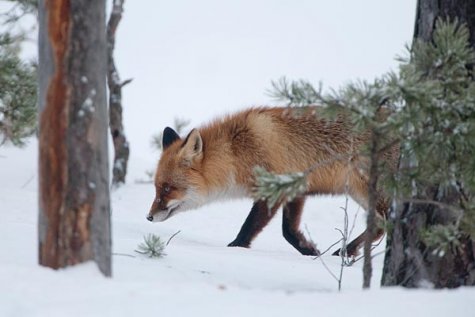Elks, springs and birdwatching
Text Kristel Vilbaste
Photos Arne Ader
Translation: Liis
Elks, Alam-Pedja
Few moments in life become etched into memory as if by lightning. On Thursday night one such happened to me. We came in the dark of the night from the Tallinn Apollo book gala, where my book about springs washonoured with an acknowledgement. As we surged from the brilliantly lit city into darkness there were suddenly two elks on the roadside. Not just on the roadside somewhere far away at a ditch or running across the asphalt. They were standing right on the asphalt border, long white legs gleaming, beard tuft hanging, large hump on the back and eyes glowing in the light. They were so close to the car that swished past them that if the window had been open I could have touched them.
The two elks stood there and looked as if they were two properly traffic trained children at a zebra crossing. They looked first left then right and … they didn’t have the time to get out on the crossing.
I have met elks many, many times in my life, in early spring at the river meadow and young elks growing up in the wild animal rehabilitation centre. I know that a wild animal is unpredictable, and when the fiery-eyed metal creature approaches a live animal as a rule continues running. Something was holding and protecting me and my partner Mikk Sarv in that moment. Mikk’s first reaction was that evidently we still had something more important to do in life! Perhaps write a book, bring people back to nature and ancient traditions.
Or were we protected by the mouthful of miracle water from the bottle, water from the Saula Siniallikas that we had collected before lunch on our road to the city, and swallowed before setting out from the capital.
This half hour too early that we as country people set off to Tallinn really was used for Siniallikas. I was deliberating whether to go to the Prandi spring where visiting in this cold is more congenial, but since road repairs hadn’t allowed visits to Saula for a long time we chose the two wonderfully beautiful spring water eyes at the Pirita river. True, the Euro-road had changed access to a messy maze but if one follows the directions precisely it is not impossible.
And I assure that I haven’t seen anything like this at our springs for a long time. The place, which in summer is utterly dark, with pale green springs, was special in snow and frost. Between the black tree trunks first a pale blue light glimmered, it was at the bottom of the spring and around the spring area –a pale blue aura.
Water is difficult to take from the spring at present, because ice formed at the edges of the spring pond after the winter rains and with a very high water level; now the level has dropped nearly a meter and clambering on large slippery ice floes is not easy, at least not with an urbanite’s footwear.
The crunching of the spring chalk boiling at the bottom of the spring also remained untested; according to my grandfather’s aunt it was always shown to those interested in the spring,
It was a surprise however that although the sunshine and the frost reached to the spring water, the spring was not steaming. The water itself however was like warm tea in the cold.
Fox
Oh yes, in addition to the elks many animals are actively moving now, thus a bouncing fox ia hunting mice publicly in the middle of a field, a freezing buzzard crouches on the top of a pole on its hunt. To keep the body heat in such cold one must eat a lot.
You have probably noted when you have been out in the forests that it is really silent there now. In addition to the snow that absorbs sounds the forest is empty of birds. The birds have gathered close to people, birdfeeders are full of birds in mornings. From the north these 40 degrees of Finnish frosts have also driven birds here. This week even fieldfares came to our garden and we haven’t seen them since September. And the visiting hawfinch was happy that the bright warmth after Taliharjapäev (Peak of winter day; January 14th) had thawed out the plum harvest that had been left lying about under the mirabelles – the little stones were good to crack now.
The springtime tit song has gone silent again in the cold, but when the thaws come it will surely return jubilantly. A group of redpolls has arrived, their current favourites are mugwort seeds.
And birdwatchers tell about the arrival of dippers, these pretty brownblack little birds with the white shirt front in rapidly flowing rivers. On the unexpected freezing of the waters in the North they came at once in a wave, sometimes these single-living birds even can be caught two together in a camera. The dipper and the kingfisher are worth going to look for at forest rivers.
The sun pillars that probably everyone saw last week show that we will have frosty weather for at least one week more. Thus firewood is now needed both morning and night.
Have a warm heart, and do go outdoors!










